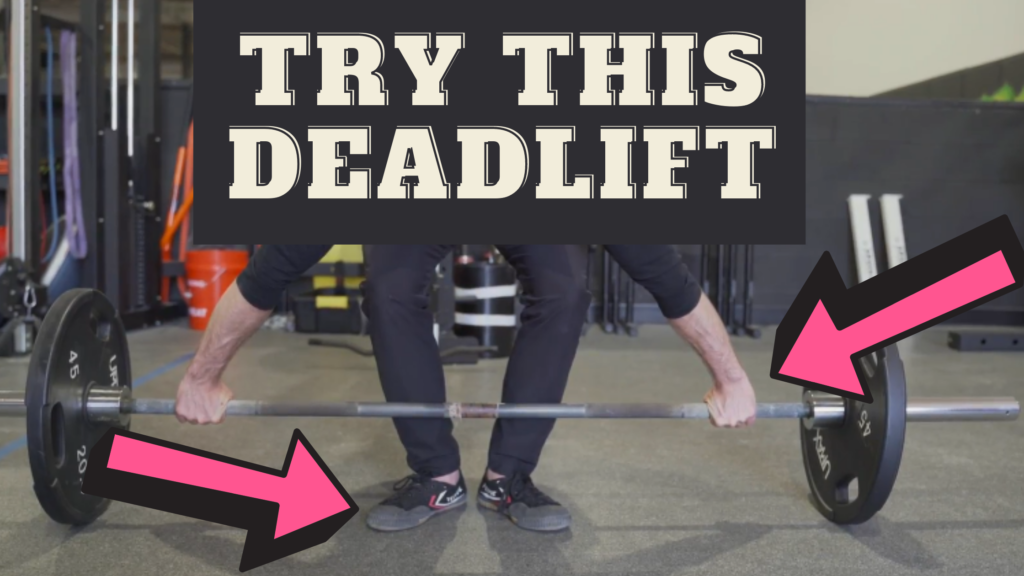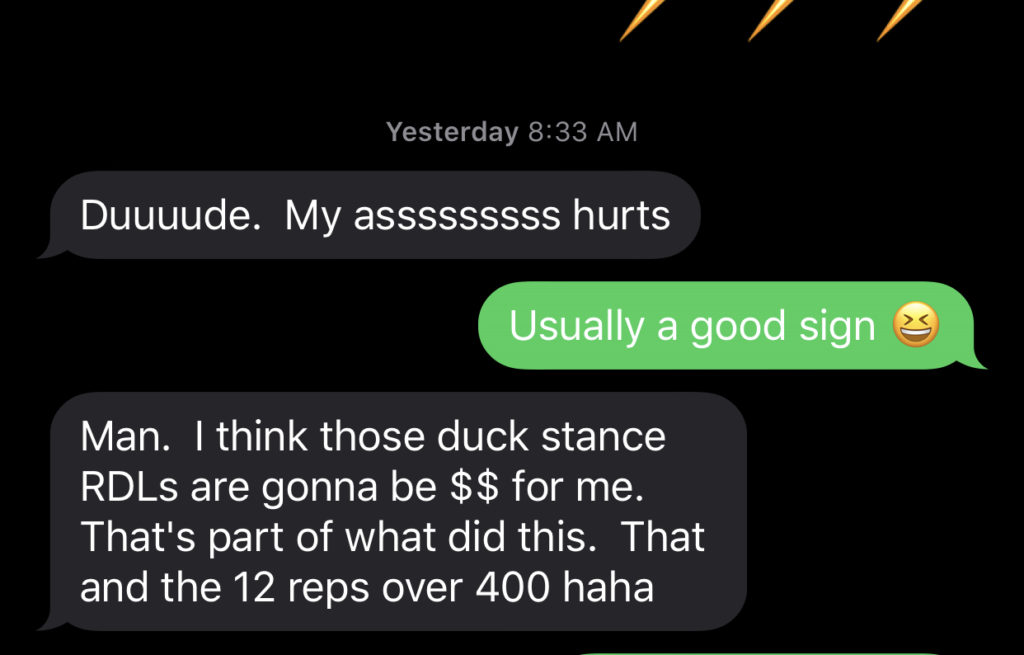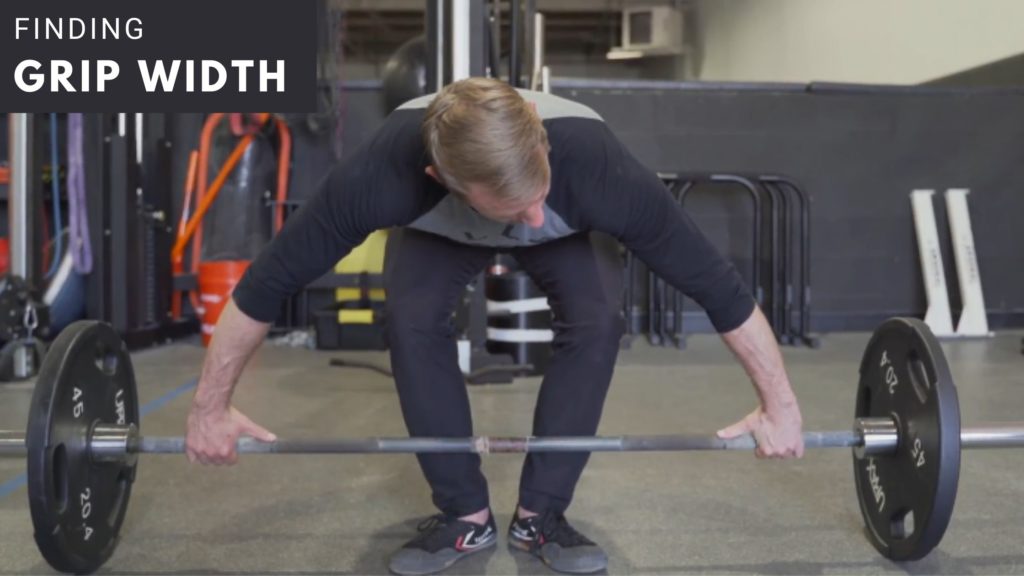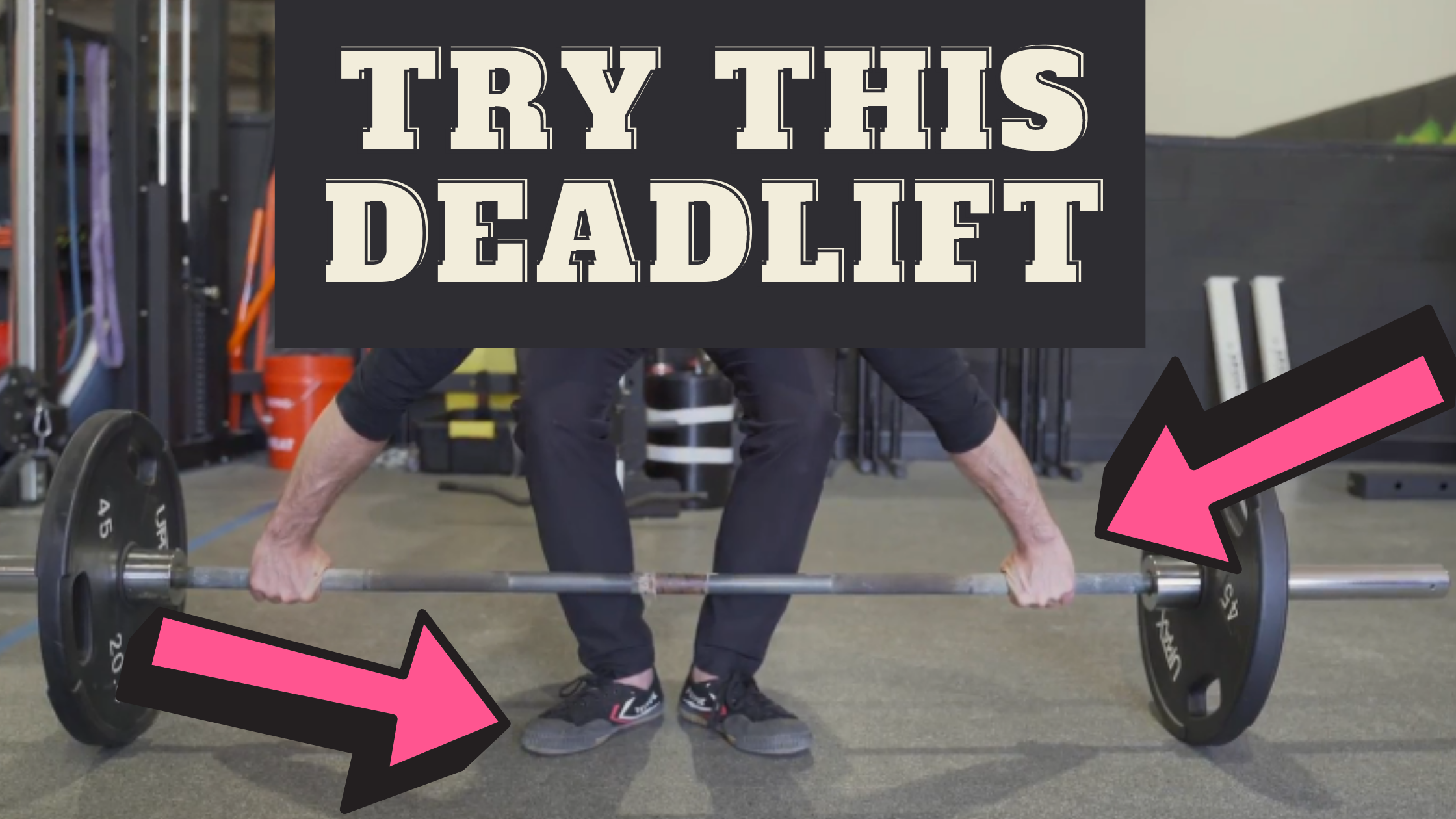
Want to get strong?
Like, REALLY strong?
Then you must become a student of the deadlift.
But we’re not just talking about doing a lot of deadlifts…
We’re talking about being a mad scientist in the deadlift laboratory. Testing, experimenting, and putting everything under the microscope of performance.
Picking up weight off the ground is a fundamental strength skill. This family of fundamentals also includes pressing, pulling, squatting and loaded walking.
Under each fundamental pattern, we can perform any number of variations to suit our unique training needs and body types.
Most lifters get acquainted with the two main styles of deadlift (sumo and conventional) and train solely with the one that promises the most weight on the bar.
Lifting heavy is an obvious part of the strength game, but grinding away at the same movement pattern for years on end is not only boring, it leads to plateaus and unnecessary wear and tear on the body.
That’s why we go back to the lab – to find exercises that will keep your training fresh, fun and fill gaps in your strength.
And when it comes to the deadlift, there are two easy places we can start experimenting – the foot stance and grip width.
Here’s a funky deadlift that takes each of those to the extreme:
The Duck Stance Snatch-Grip Deadlift
My clients and I love this lift.
Get ready for some new sensations…

Let’s take a look at the grip first.
THE SNATCH-GRIP
The ultra-wide grip is an Olympic lifting technique used in the (get ready for it) barbell snatch.
Start with a grip about thumbs-length outside the ring. Move in a bit if this feels tweaky on your wrists.

For deadlifting purposes, a wide grip gives us a few unique training benefits:
- Grip strength
- Your fingers and forearms work extra hard in this outstretched position
- Upper back strength
- This position demands more lat and upper back engagement compared to traditional deadlifts where the arms hang straight down
- Off-the-floor strength
- The snatch-grip deadlift mimics a deficit deadlift position as your hips and torso start much lower. This deeper setup will help refine your technique at the bottom range of motion.
- Leg strength
- As mentioned above, the SG starting position requires more knee and hip flexion. This brings in more use of the quads and has a squat-like feel.
In sumo and conventional deadlifts, the arms are kept straight and vertical. This is absolutely necessary for lifting the most weight possible in a safe and streamlined way.
Beginners should master this traditional “closed” arm angle and be confident in their lat control before “opening” into a wider grip.
THE DUCK STANCE
I was introduced to the duck stance deadlift at a seminar some years back as a training option for those with tight hips.
I tried it and immediately felt a new kind of “wedge” that seemed to help my legs, hips, and back play nicely together.
Dan John includes these in his Amor Building workouts and some of the strongest powerlifters in the world train and compete with a very narrow conventional setup.
Individual hip anatomy will influence how any deadlift stance works and feels, but the duck stance has been well tolerated, and even preferred, by everyone I’ve taught it to.
Curiously, this narrow stance allows the hips to start closer to the bar by way of pushing the knees/shins out to the side.
As with any squat or deadlift, experiment with toe-out angles and embrace asymmetry when it clicks. For example, keeping my right foot a few degrees straighter than my left often feels best on my hips and back.

ALL TOGETHER NOW
The more ways we have to deadlift, the better.
So many lifters get stuck on a single technique and subsequently have limited options for progress in training.
With the snatch-grip + duck-stance deadlift, we get to train the extremes…
The hands are as wide as possible and the feet are as close as possible.
When combined, we’re dealing with plenty of new stimulus while performing a simple movement.
PROGRAMMING
How does this hybrid deadlift technique fit into our training?
Here are a few ideas:
- In the warm-up
- Using harder variations of a lift to prepare for said lift is a favorite warm-up technique (Front squats before back squats or pause bench before touch ‘n go bench for example)
- Try your first 2-3 warm-up sets with 6 reps of the SGDS
- As the main lift
- If you’re deadlifting 2x/ week, train heavy with your usual DL form one day and lighter with the SGDS the next (be sure to leave at least 2 days in between sessions)
- If you’re deadlifting 1x/ week, alternate each week
- As an accessory
- This will be where most of us utilize powerlift variations
- Keep the intensity high. Up to 8 reps, but 5-6 is usually the sweet spot
- Because your upper back and legs are getting extra work, the SGDS might take the place of other accessories in the row or squat family
Once you’re handling enough weight that grip becomes a limiting factor in hitting your reps, by all means use straps.
Here’s a fun deadlift challenge for you:
- Load a bar up 50-60% of your max
- Perform 2 reps in a full SGDS position
- Bring the hands in an inch or two, hit 2 reps
- Repeat, moving the grip closer until your arms are vertical under the shoulders
- Switch to a narrow sumo stance
- Keep hitting doubles as you scoot the feet out 1-2 inches at a time into your widest comfortable sumo stance
Have fun!
